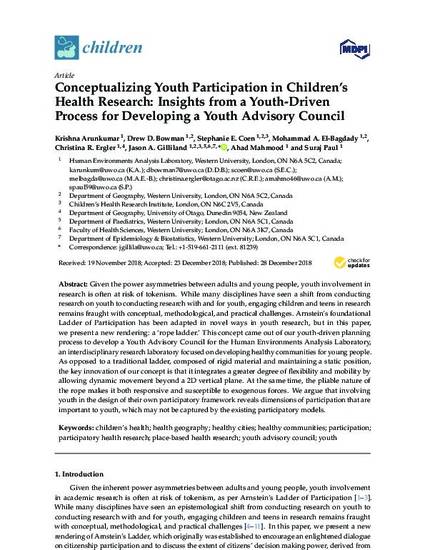
Given the power asymmetries between adults and young people, youth involvement in research is often at risk of tokenism. While many disciplines have seen a shift from conducting research on youth to conducting research with and for youth, engaging children and teens in research remains fraught with conceptual, methodological, and practical challenges. Arnstein’s foundational Ladder of Participation has been adapted in novel ways in youth research, but in this paper, we present a new rendering: a ‘rope ladder.’ This concept came out of our youth-driven planning process to develop a Youth Advisory Council for the Human Environments Analysis Laboratory, an interdisciplinary research laboratory focused on developing healthy communities for young people. As opposed to a traditional ladder, composed of rigid material and maintaining a static position, the key innovation of our concept is that it integrates a greater degree of flexibility and mobility by allowing dynamic movement beyond a 2D vertical plane. At the same time, the pliable nature of the rope makes it both responsive and susceptible to exogenous forces. We argue that involving youth in the design of their own participatory framework reveals dimensions of participation that are important to youth, which may not be captured by the existing participatory models.

DOI: 10.3390/children6010003, ISSN: 2227-9067, PMID: 30597913